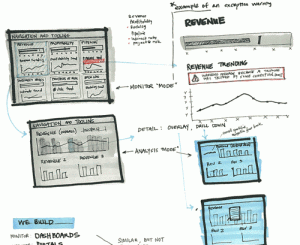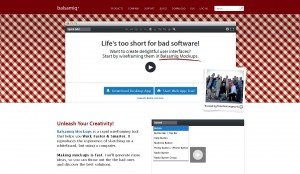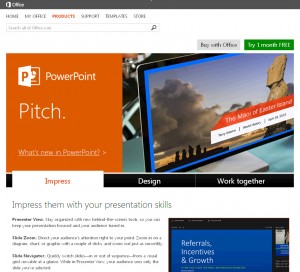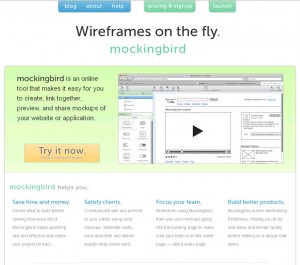Good wireframes are crucial to any successful software, mobile or web development project. Wireframing allows you to work out the basic navigation and layout structure of your website or app before you start the development process. Without wireframes, your development team is essentially driving blind which ultimately leads to myriad problems such as failing to meet expectations and deadlines. Wireframes act the same as an  architectural blueprint would for a new building or home. Like an architect’s blueprint, they outline the basic structural and functionality details of each page before aesthetic finishes such as color or font are selected. Reviewing your wireframes will give you a solid idea of how viewers will experience your website. This provides you the opportunity to make changes and refinements prior to beginning development which can save precious time and resources.
architectural blueprint would for a new building or home. Like an architect’s blueprint, they outline the basic structural and functionality details of each page before aesthetic finishes such as color or font are selected. Reviewing your wireframes will give you a solid idea of how viewers will experience your website. This provides you the opportunity to make changes and refinements prior to beginning development which can save precious time and resources.
Wireframes are one of the most important communication tools at your disposal when working with web developers. However, they are of even more valuable if your freelancer developers or development teams are remote. The value in providing a prototype to show (rather than having to verbally describe) what your web design will look like can mean the difference between your project turning out right or being a total disaster. If you are working with language barriers, wireframes minimize opportunities for miscommunication and provide documentation of how you intend the finished product to look and function. This is very important as that documentation can protect you in case of contract disputes.
Taking the time to wireframe gives you the chance to view a range of layout options for how your site will appear without investing unnecessary money and time to create an actual site or app. This will allow your team the ability to discuss in detail different versions and user experiences, or even perform A/B testing early in the process.
However, with hundreds of wireframing tools available, how do to you go about choosing which ones will create the best wireframes for your needs? We have researched and narrowed down the options for you.
Below are our picks for 10 essential tools to create great wireframes:
1. Balsamiq – Wireframing tool Balsamiq creates wireframes that resemble sketches and features a large library of components that are easy to use – you simply select and drag what you would like to use in your design. This tool is also consistently rated as a top wireframing tool among the web design community because it is browser based and has plugins for Google Drive, Confluence and JIRA. The price is also reasonable starting at only $12 per month.
2. InDesign – Virtually every designer and many people are familiar with InDesign as the popular desktop design and publishing application in Adobe’s Creative Suite. But it is too often overlooked it as an excellent wireframing tool. InDesign offers many advanced features not available in other wireframing tools, such as the ability to utilize video and animation in your wireframes. InDesign is a no brainer for people with more advanced graphic design skills as it is truly a multi-functional design tool.
3. Omnigraffle – This tool is a Mac favorite for easily producing quality wireframes in a short amount of time. Omnigraffle features a wide range of aesthetically pleasing stencils to create wireframes and page layouts. These easy to place stencils are not only reusable, but you can download additional stencil packs if you require something different. Omnigraffle also features automatic page layouts and graph tools so you can quickly and easily create multiple wireframes. This tool is simple to use and also has a version for iPad.
4. PowerPoint –PowerPoint is an excellent wireframing tool, as its simple user friendly design tools and wide use make it easy for even non-techsavvy team members to view and contribute. It is also especially useful when working with freelancers, as it is great for iterations and allows for continuity of workflow. A bonus is the integration with MyCrowd, so you may attach either portions or your entire PowerPoint to task requests and quickly send them to freelancers.
5. Visio – Visio’s is Microsoft’s chart making and diagramming software tool. The interface is easy to use and intuitive for those already accustomed to working with other Microsoft apps such as Office. Visio is a top wireframing tool, as it offers easy chart creation and has add-on tools such as Swipr, which allows you to create and export usable HTML prototypes. With option to try or buy and a version for Microsoft 365 this is the clear choice for Microsoft power users.
6. Axure – Here is another great wireframing tool – allowing users to easily create dynamic interactive prototypes without coding. Azure is a tool much loved by many professionals, as it allows you to experience the wireframes you are creating. This is great for getting feedback or conducting cheap cost effective user testing.
STOP: Remove errors in your email campaign through MyCrowd Email Testing.
Bonus Free Wireframing Tools
1. Cacoo – Offers a fantastic basic free tool with an almost free upgrade price of $4.95 per month. One of the main things going for Cacoo is that it is extremely user friendly. Cacoo makes it easy to create wireframes with its templates, or you may choose to create your own wireframe from scratch using more advanced options. Cacoo is great because it allows you to share wireframes with team members and edit in real time. Plus you can use it to create a wide range of charts from site maps to mind maps.
2. Mockingbird – Another great free wireframing tool is Mockingbird, which allows a user to create 1 free project or ten wireframes at no cost. The web-based platform also allows users to share wireframes from anywhere via a direct link. This is great if you need to demo for a client or share with your development team, The paid plans start at just $9 per month.
3. Lumzy – Lumzy’s free versions is great for users who wish to work collaboratively, as it allows for real-time team editing. Lumzy also features a chat engine so going over wireframes with team members is made easier. Lumzy is great for quick mock-ups and has an extensive library of components out of the box to build with.
4. Lovely Charts – This is a great free wireframing tool because it is extremely easy to use and has a large library of symbols from which to choose. Lovely Charts also offers some great time saving features – assumptions are made based upon the type of diagram you are creating and up to 20 states of your diagram can be saved in the memory so you can refer back to them. This is one of the most simple platforms on the market. Great for beginners!
5 Helpful Resources for Creating Great Wireframes
In addition to the essential wireframing tools highlighted above, here are some great resources for guidance in creating high quality layouts your designers and developers will love!
1) Steve Krugg the godfather of usability and UI/UX design has written some invaluable books, such as Rocket Surgery Made Easy: The Do-It-Yourself Guide to Finding and Fixing Usability Problems and Don’t Make Me Think, that address wireframes, user experiences and how to test them. Here you can get all of his books from Amazon.
2) Beginners Guide to Wireframing – This is a great step by step guide from Webdesign tuts+. This is perfect for the beginner or aspiring product managers.
3) Wireframes Magazine – Super in-depth resource for accessing everything you need to know about wireframing and how-to wireframe. They include wireframe samples, UI tools, tips, and articles.
4) Great Wireframing: The All-In-One-Guide –The title pretty much sums it up. Here you will find an extensive collection of resources such as guides, tools, techniques, and more. Grace Smith includes links to other sites and resources for an in depth look at wireframing. Good for both the beginner and advanced wireframer.
5) Framing the Problem – Great article from ClickZ that focuses on the main questions your wireframes need to answer. What types of visitors need to be persuaded? What actions do they need to take? What information do they need to take action?







